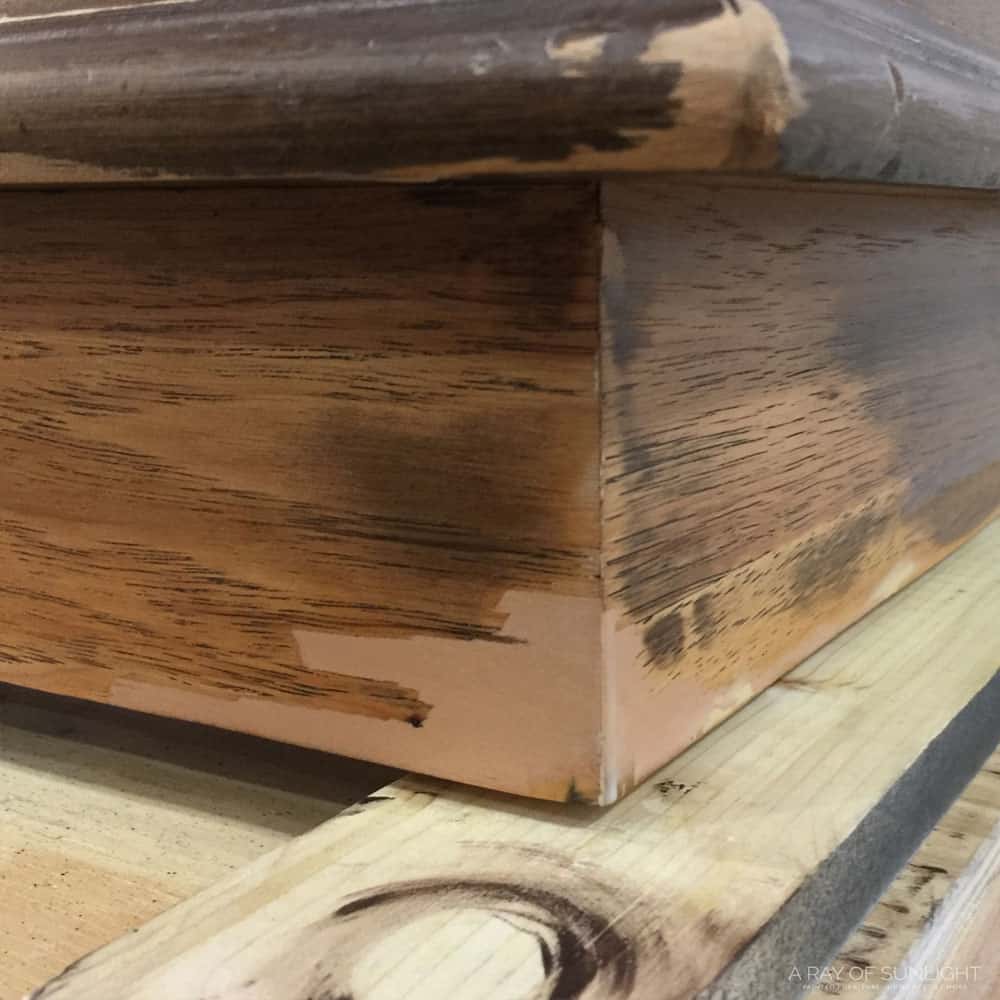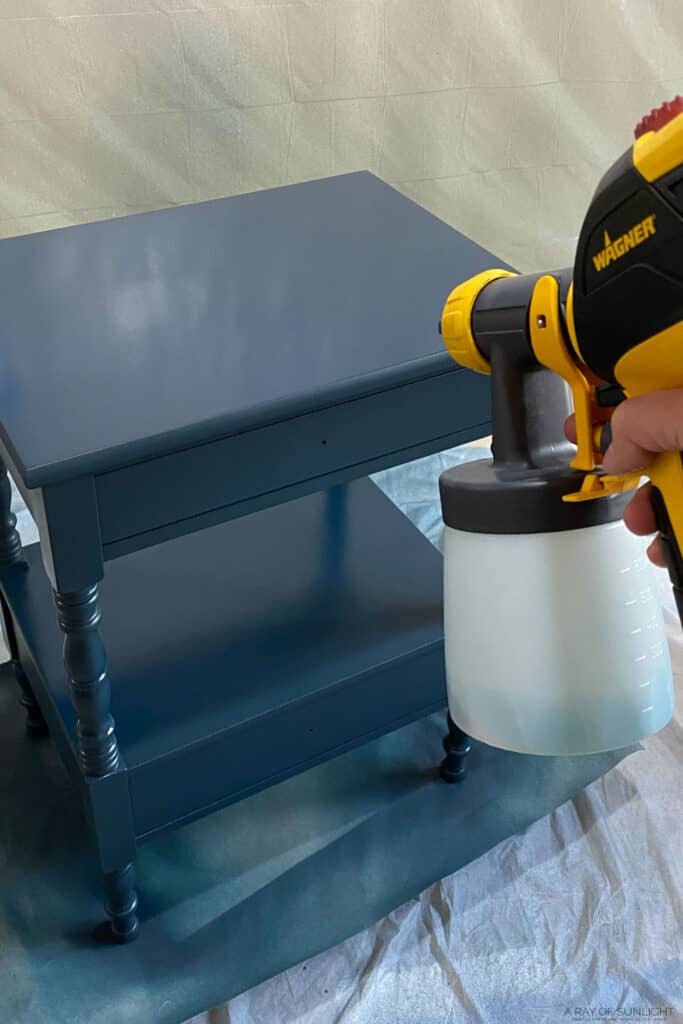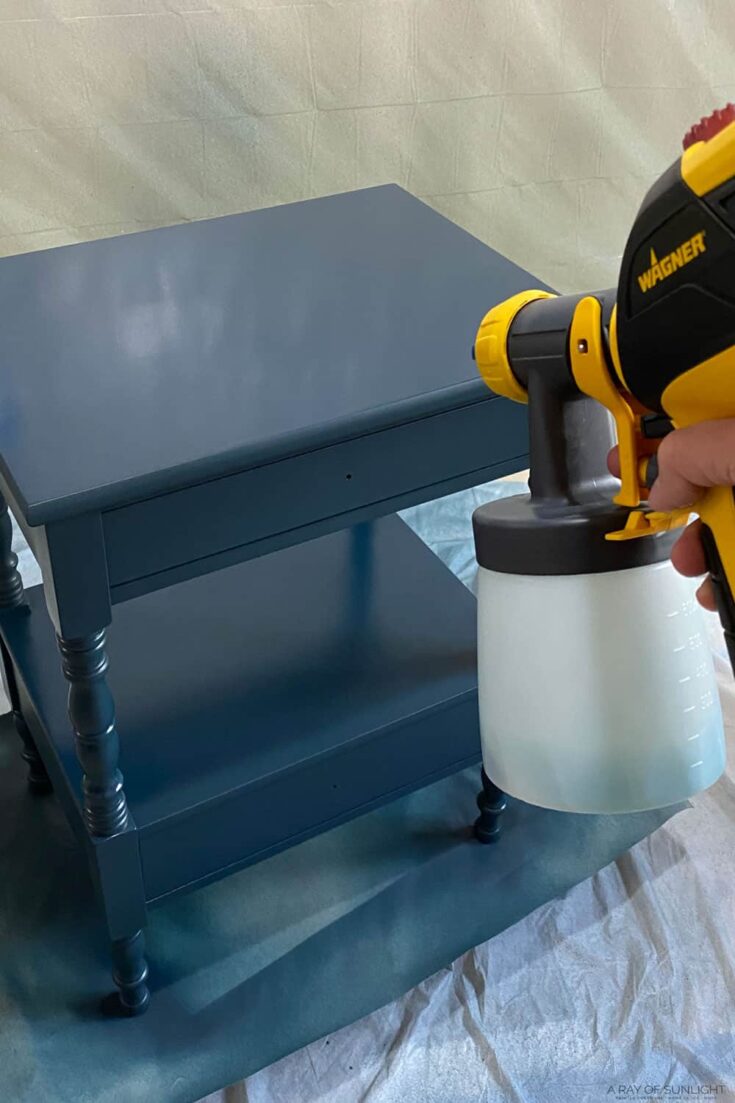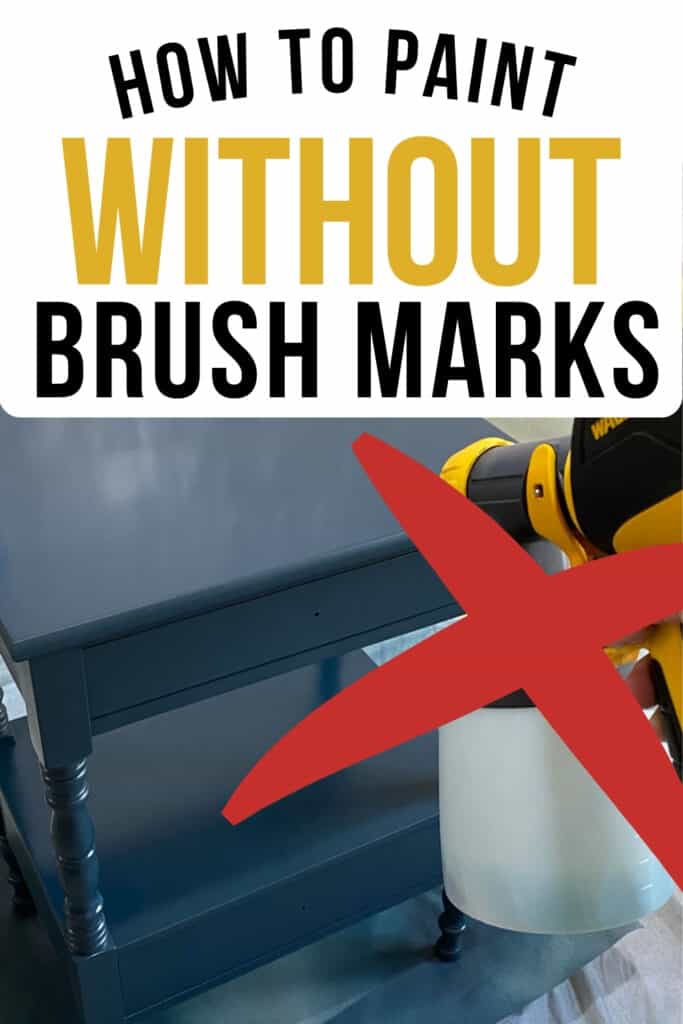How to Paint Furniture Without Brush Marks
Discover how to paint furniture without brush marks and get a smooth finish with our top 7 tips and tricks. You don’t have to have a paint sprayer to get a brush free finish on your painted furniture makeovers! And you don’t have to have any special skills or spend a bunch of money on tools.
Get more painting techniques for furniture here!
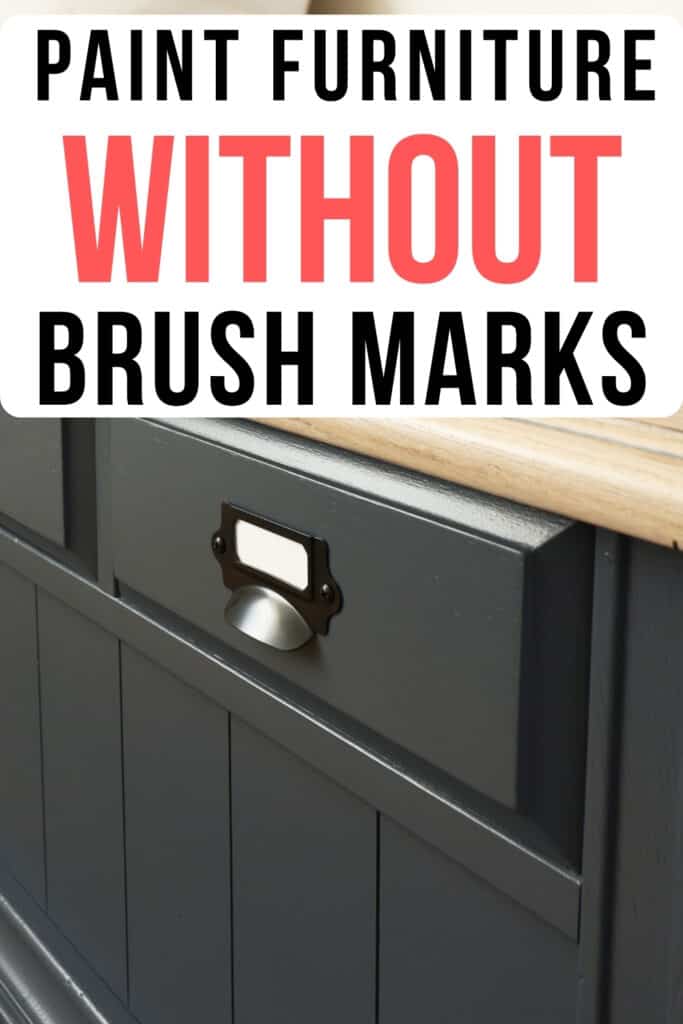
As an Amazon Associate, I earn from qualifying purchases. I also may earn from other qualifying purchases with other companies or get free product to review and use. All opinions are my own.
How to Paint Furniture Without Brush Marks
We’ve compiled our top tips for getting a brush free finish on painted furniture so you can avoid brush marks on your next project. Without further ado, here they are!
How to Get a Smooth Finish When Painting Furniture
If you are like me, you probably want to get the smoothest finish as possible on your painted furniture!
The good news is that with these few simple tips, you can get a very smooth and professional finish on your next furniture makeover!
1. Start with a Smooth Surface
If you want to get a smooth finish when painting furniture, you have to start with a smooth surface!
If the old finish is failing, you’ll see it in your painted finish. You’ll also see large dings, scratches and any damage that’s on the surface.
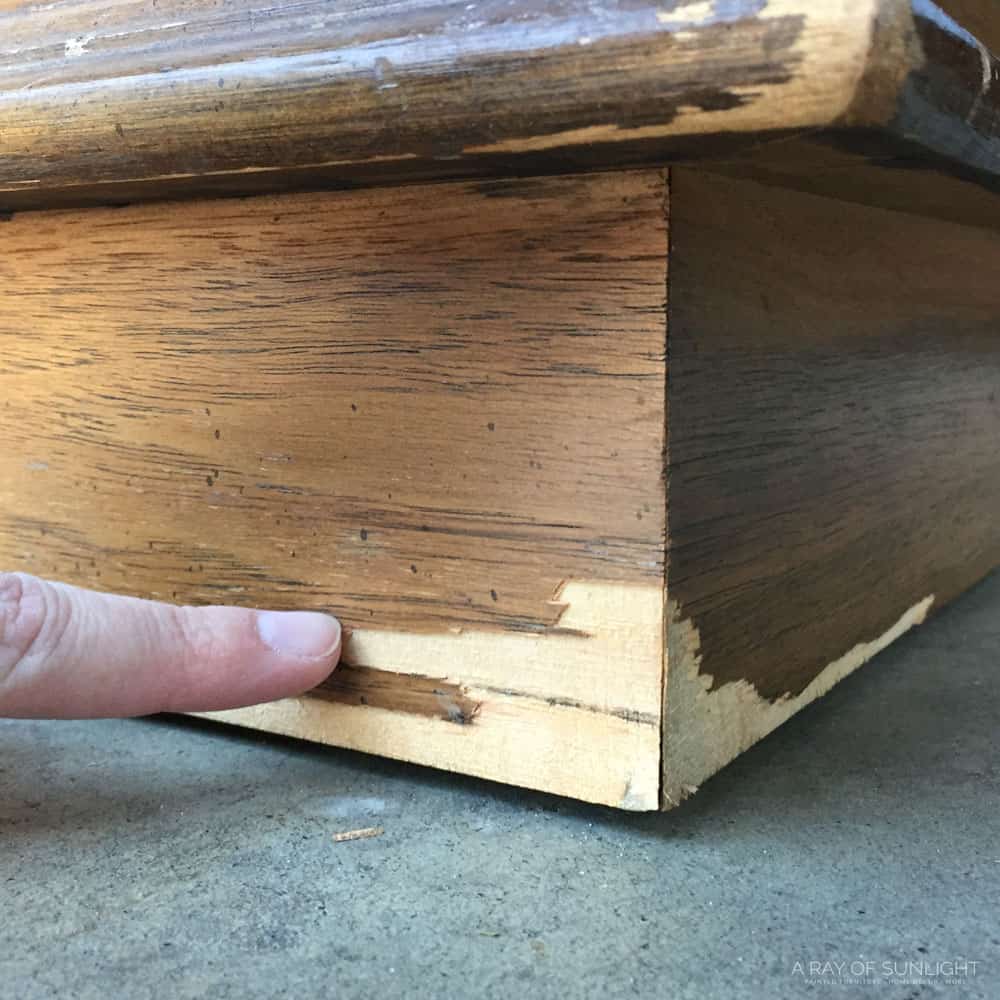
So take a few minutes before you pick up your paint brush to smooth out the surface.
That might mean that you need to sand the surface down a bit with some 220 grit sandpaper. Learn more about sandpaper for furniture painting here.
If there is any damage, fix the damage and sand it all smooth before painting. Check out our favorite ways to repair damaged furniture here!
2. Use the Right Paint
Not all paint is created equally. Learn more about the types of paint for furniture here.
Self-leveling paint is one of the absolute best ways to paint furniture without brush marks. A self-leveling paint takes a little bit longer to dry, but as it dries, it will flatten out, creating a brush-free finish.
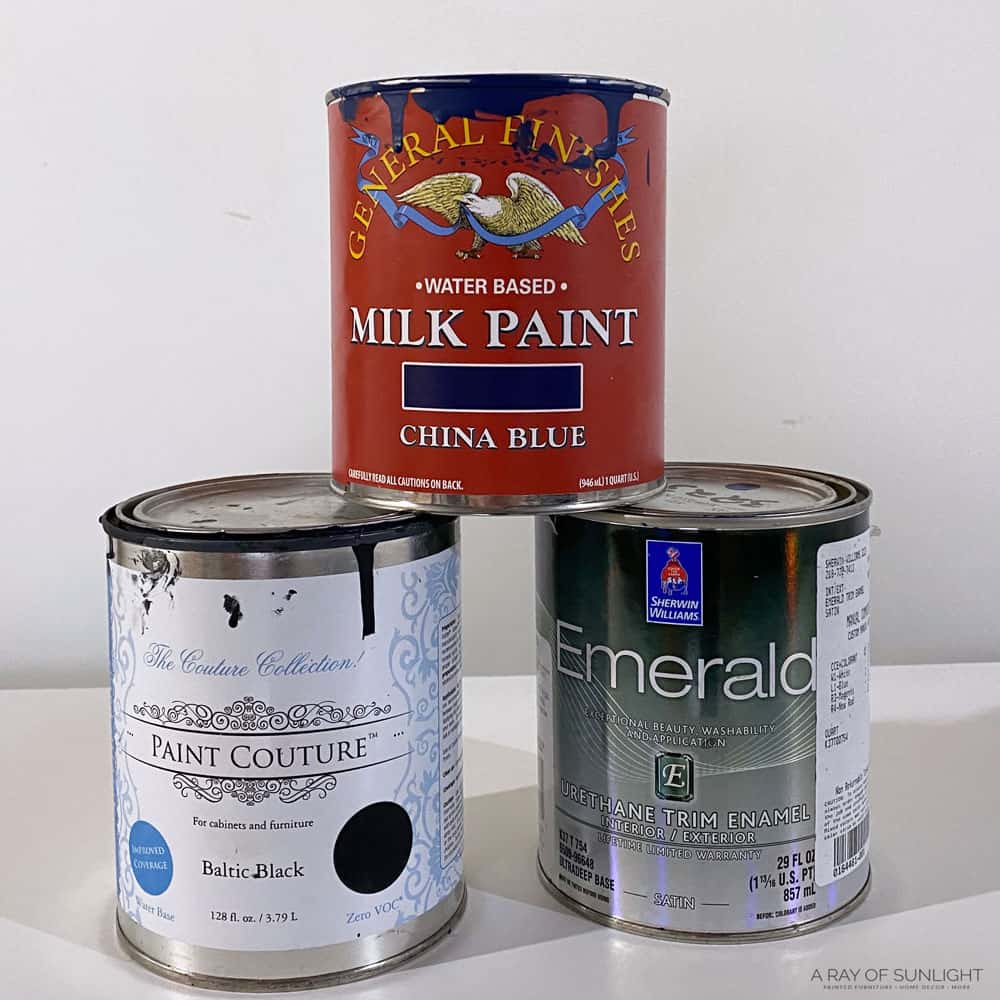
Some self-leveling paints are:
- General Finishes Milk Paint
- Paint Couture Paint
- Rust-Oleum Milk Paint
- Sherwin Williams Emerald Trim Urethane
- Benjamin Moore Advance
- Chippy Barn Amulent Paint
I personally have used and love General Finishes Milk Paint, Paint Couture Paint, Amulent, and
I personally have used and love General Finishes Milk Paint, Paint Couture Paint, Amulent, and Sherwin Williams Emerald Trim Urethane.
If you use a self-leveling paint, you don’t have to worry as much about the other tips and tricks below! The paint basically does it all!
3. Thin the Paint
Adding a little water (water for water-based paint, mineral spirits for oil-based paint, etc.) will make the paint dry a little slower, which will give it more time to level out while the paint dries.
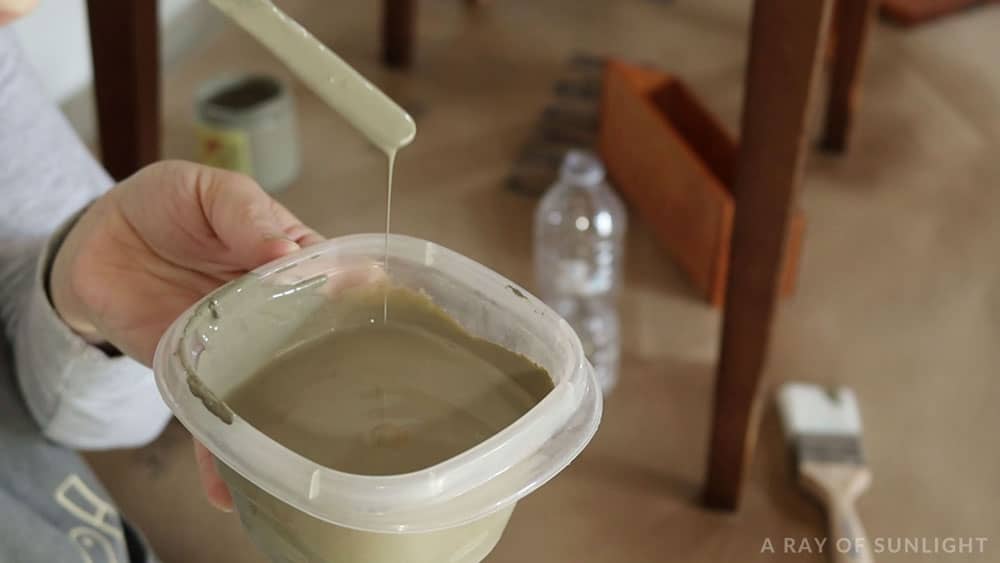
It also makes it so the paint can be brushed on in thinner coats, instead of thick coats that are full of ridges from the brush.
I never really measure the paint here, but a good rule of thumb is to not thin it out more than 10%. You can also use a product called Floetrol, but honestly, water works really well.
4. Use a Quality Paint Brush
Can you believe that the brush you use can make a huge difference, even if you’re using a paint that isn’t self-leveling?
It sure can! Especially when you use a slightly damp brush! (Yep, get it slightly wet before using it!) The best budget-friendly paintbrush is a Zibra paintbrush.
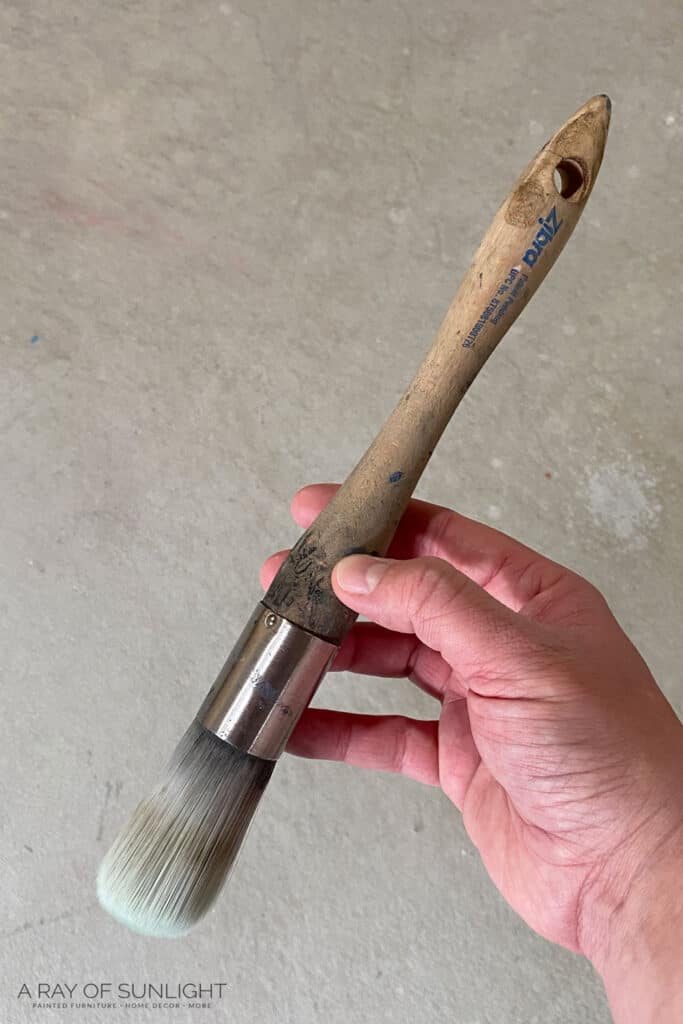
I love Zibra brushes because they come in fun shapes that make it easier to paint. (The round paint brush is my favorite because it makes it easier to paint details and spindles.)
But, if you’re willing to spend a little more on a paintbrush, there are a couple of other great options that make the paint look brush free.
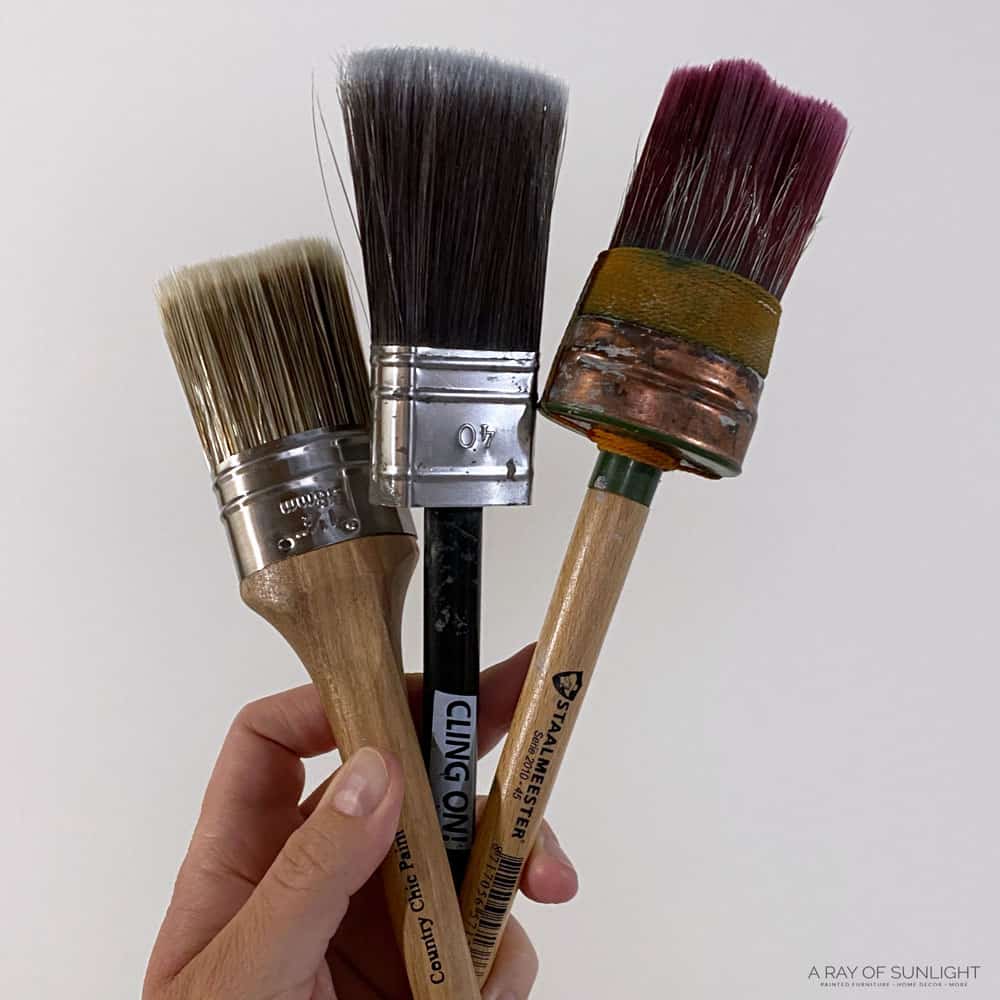
And I would argue that I think these are the best of the best when you want a brush-free finish.
Country Chic Paint’s Painting Sponge is also a great “brush” to help you get a brush mark-free finish! Here’s a makeover of painting a wood bench with this sponge.
Check out the best paint brushes for painting furniture here.
Don’t forget to clean your brushes to maintain their quality, check out my guide on how to clean paint brushes.
5. Spray Water Mist While Painting
This is similar to thinning the paint with some water before brushing it on. Before brushing the paint onto your furniture, spray a little mist onto the furniture and onto the paint brush.
I use this continuous water mist bottle.
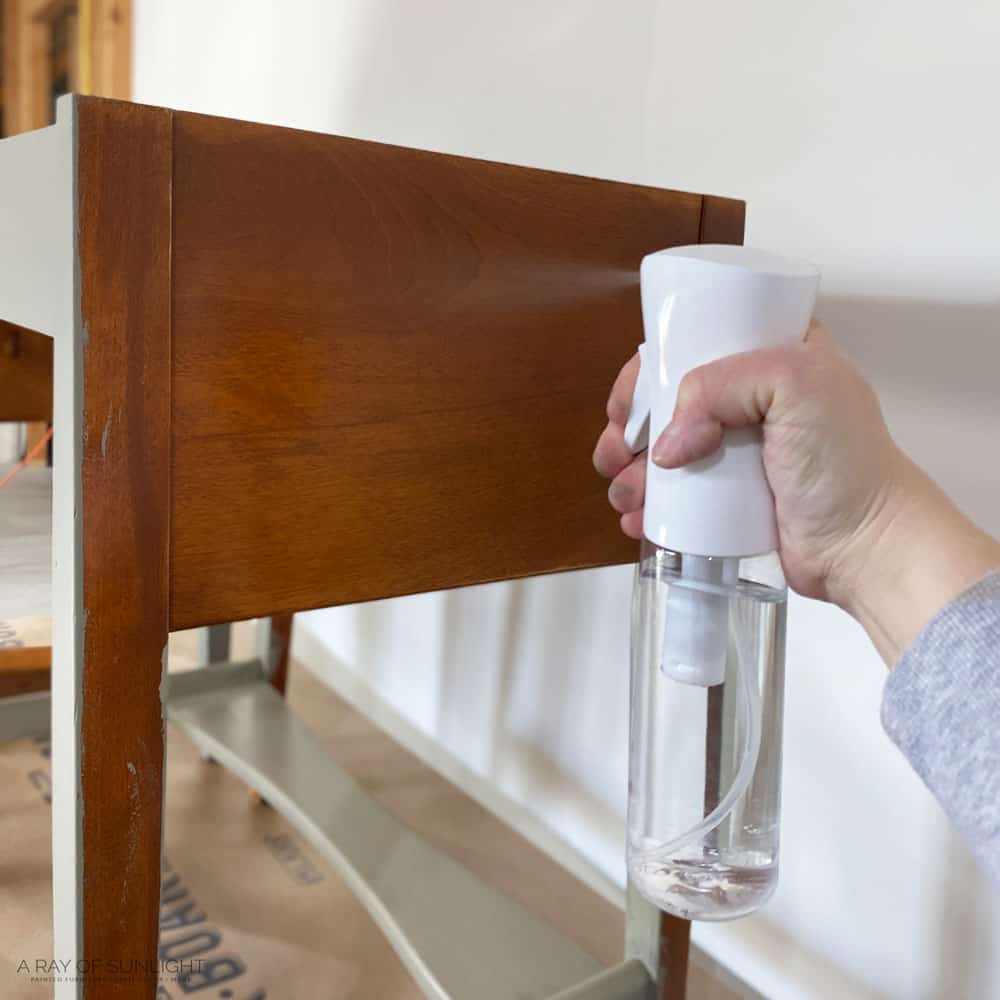
This will help your paint go on smooth and thin, which helps create a brush-free finish.
((To be honest, I was kind of leery of this method. But I tried it and I’m totally hooked on it! It really does help create a brush-free finish!)
6. Brush Paint in the Direction of the Wood Grain
Yep, slapping the paint on in every direction isn’t going to get you the best results here. Instead, brush the paint on in the direction of the wood grain.
And then before you move on to the next small section, brush over the paint with long brush strokes. This will make any brush marks that are left behind look like they are part of the wood grain.
7. Sand Between Coats
If you do end up with brush marks when painting furniture, you can sand them away before you paint the next coat.
I like to use 220 grit sandpaper for this, and depending on how thick the brush marks are, I use a power sander to help remove them.
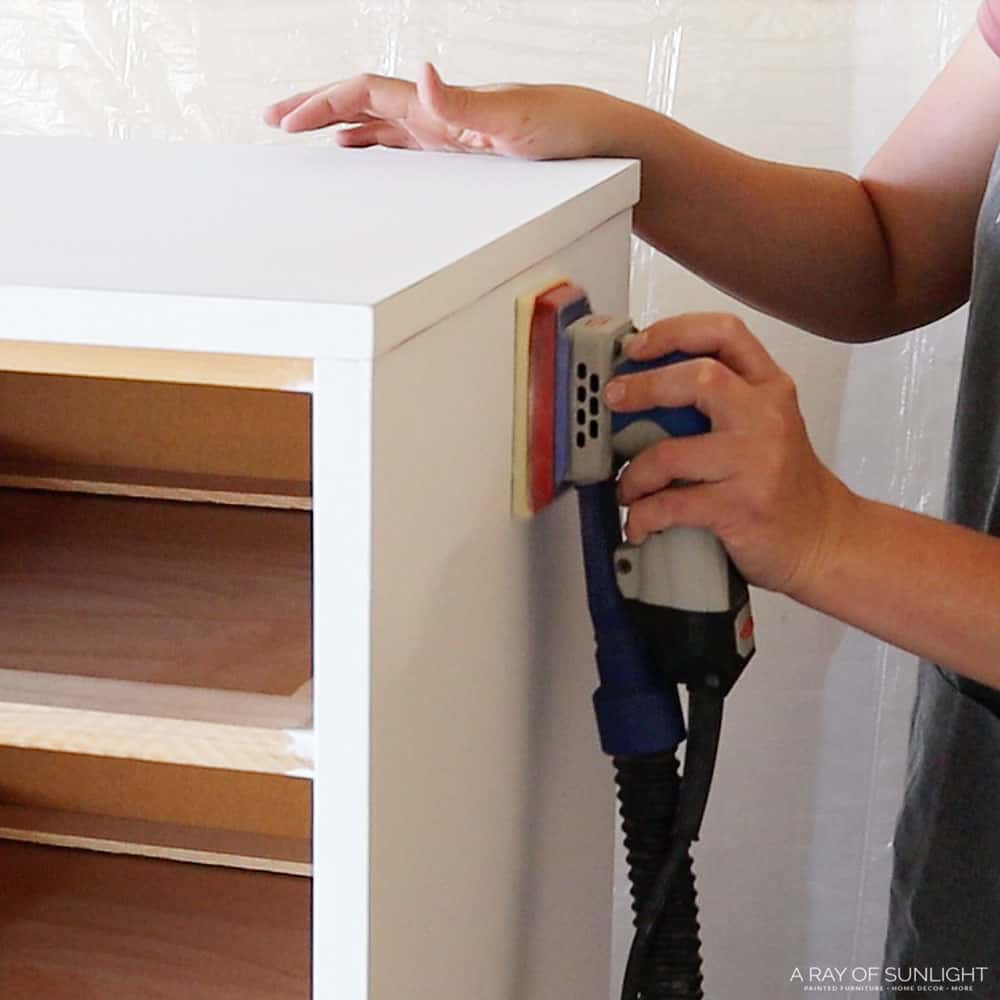
My favorite sander is my SurfPrep sander (Use code RAY10 to get 10% off your order), but if that’s not in your budget (it wasn’t in my budget for a few years!) then an orbital sander works great for flat surfaces.
Read this post to learn more about the best sanders for furniture!
8. Or Use a Paint Sprayer
Last, and definitely not least, if you don’t want to worry about all of those things, using a paint sprayer is the quickest way to paint furniture without brush marks.
It’s personally my favorite way to get a brush-free finish! This is the paint sprayer I started with. The Wagner Double Duty is a great beginner-level paint sprayer!
But, if you’re looking to invest in a really amazing paint sprayer, this Fuji Q4 Platinum paint sprayer is my all-time fav.
Check out the best HVLP paint sprayers for furniture here.
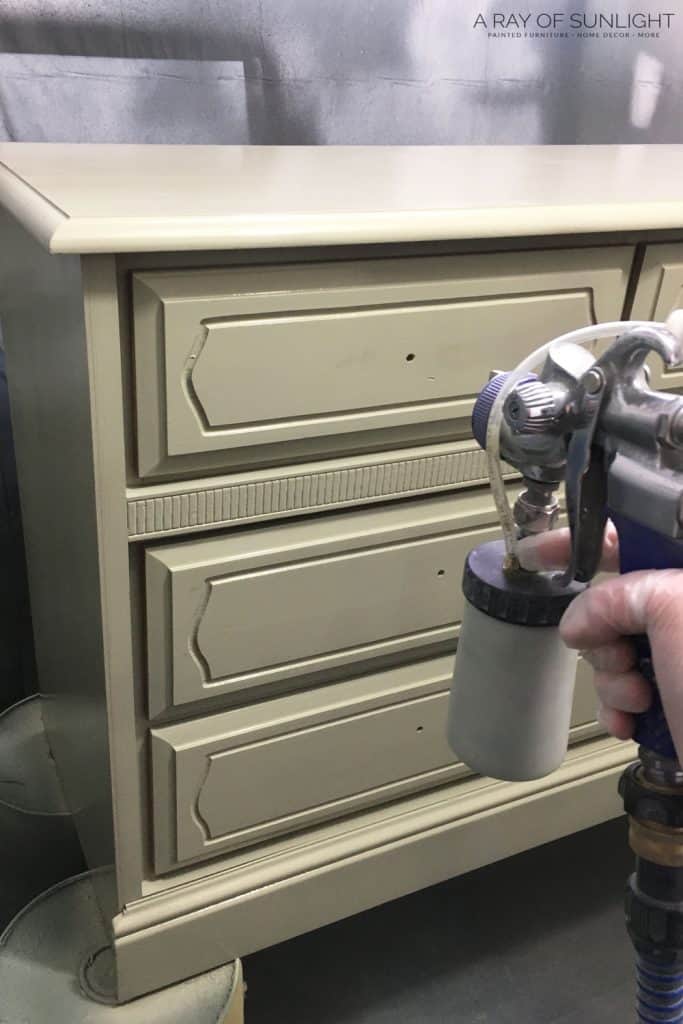
Best of luck with your painting adventures!
More Painting Furniture Resources
- Best Painting Furniture Supplies
- How to Paint Furniture
- How to Paint Laminate Furniture
- The Best Spray Paint for Wood Furniture
- Spray Paint VS Brush Paint Furniture
Follow us on YouTube to get more tips for painting furniture.
Or share your project with us on our Facebook Group and be part of our community. See you there!

